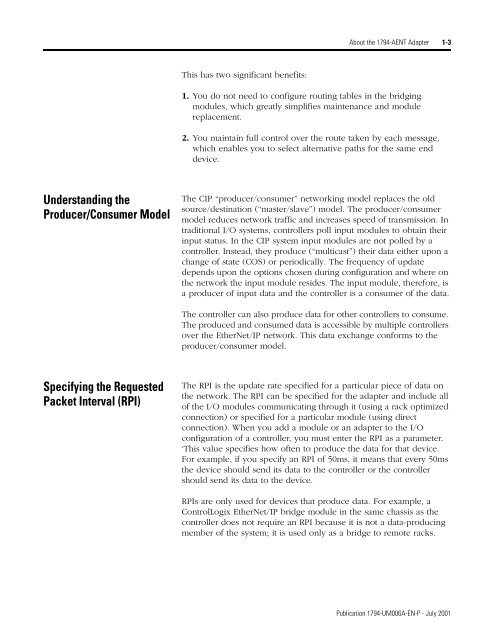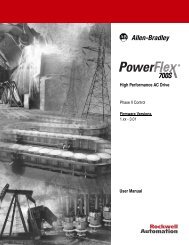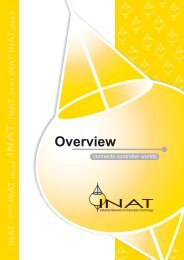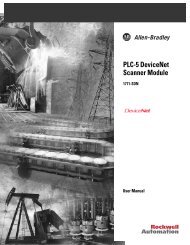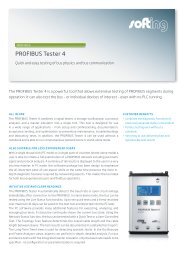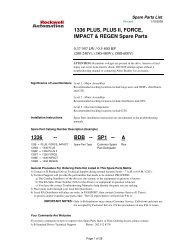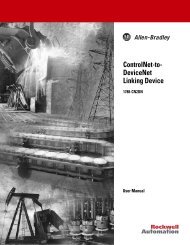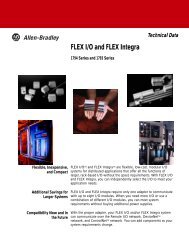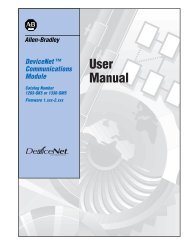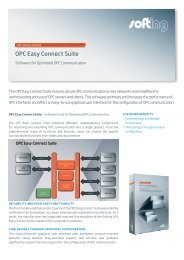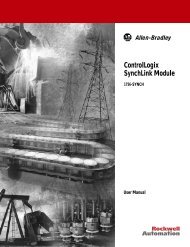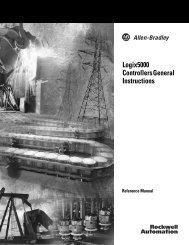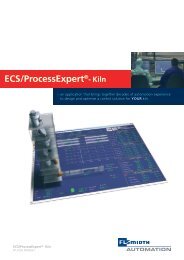FLEX I/O EtherNet/IP Adapter Module User Manual, 1794-UM006A ...
FLEX I/O EtherNet/IP Adapter Module User Manual, 1794-UM006A ...
FLEX I/O EtherNet/IP Adapter Module User Manual, 1794-UM006A ...
You also want an ePaper? Increase the reach of your titles
YUMPU automatically turns print PDFs into web optimized ePapers that Google loves.
Understanding the<br />
Producer/Consumer Model<br />
Specifying the Requested<br />
Packet Interval (RPI)<br />
This has two significant benefits:<br />
About the <strong>1794</strong>-AENT <strong>Adapter</strong> 1-3<br />
1. You do not need to configure routing tables in the bridging<br />
modules, which greatly simplifies maintenance and module<br />
replacement.<br />
2. You maintain full control over the route taken by each message,<br />
which enables you to select alternative paths for the same end<br />
device.<br />
The C<strong>IP</strong> “producer/consumer” networking model replaces the old<br />
source/destination (“master/slave”) model. The producer/consumer<br />
model reduces network traffic and increases speed of transmission. In<br />
traditional I/O systems, controllers poll input modules to obtain their<br />
input status. In the C<strong>IP</strong> system input modules are not polled by a<br />
controller. Instead, they produce (“multicast”) their data either upon a<br />
change of state (COS) or periodically. The frequency of update<br />
depends upon the options chosen during configuration and where on<br />
the network the input module resides. The input module, therefore, is<br />
a producer of input data and the controller is a consumer of the data.<br />
The controller can also produce data for other controllers to consume.<br />
The produced and consumed data is accessible by multiple controllers<br />
over the <strong>EtherNet</strong>/<strong>IP</strong> network. This data exchange conforms to the<br />
producer/consumer model.<br />
The RPI is the update rate specified for a particular piece of data on<br />
the network. The RPI can be specified for the adapter and include all<br />
of the I/O modules communicating through it (using a rack optimized<br />
connection) or specified for a particular module (using direct<br />
connection). When you add a module or an adapter to the I/O<br />
configuration of a controller, you must enter the RPI as a parameter.<br />
‘This value specifies how often to produce the data for that device.<br />
For example, if you specify an RPI of 50ms, it means that every 50ms<br />
the device should send its data to the controller or the controller<br />
should send its data to the device.<br />
RPIs are only used for devices that produce data. For example, a<br />
ControlLogix <strong>EtherNet</strong>/<strong>IP</strong> bridge module in the same chassis as the<br />
controller does not require an RPI because it is not a data-producing<br />
member of the system; it is used only as a bridge to remote racks.<br />
Publication <strong>1794</strong>-<strong>UM006A</strong>-EN-P - July 2001


